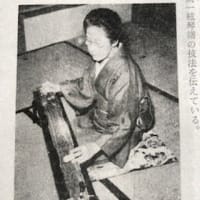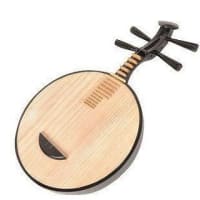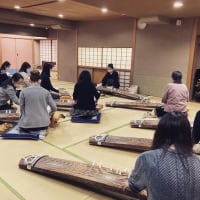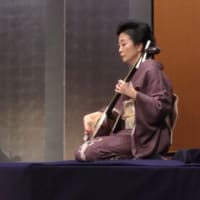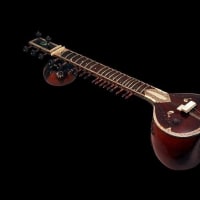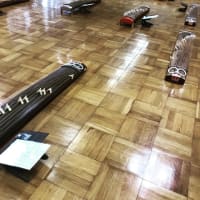
美緒野会には米国ノースカロライナ州にありますアッシュビルという街にも支部があります。
特にこちらの街では、お箏を見たり聴いたりした事のない方が多いので、演奏をしますとたくさんのご質問をいただきます。
先月、東テネシー州立大学にて、学生様対象に演奏とワークショップを行い、そこでも多くのご質問をいただきました。
皆様からいただくご質問におこたえしていきたいと思います。
まず最初に、よく聞かれるご質問です。
「お箏は何で出来ていますか?」
お箏は桐でできています。
樹齢50〜60年の木を切って数年乾燥させ、皮を剥いだりしてからまた乾燥させ、形を整え、組み立て、装飾を施すそうです。
かなり時間と手間のかかる工程のようです。
お箏の糸は現在ではテトロンを使っていますが、化学繊維が出来るまでは、絹糸が使われていました
お箏本体と糸の間にあるブリッジは柱(じ)と言います。
これも現在ではプラスティック製が多く使われていますが、高級なものは象牙で出来ています。
プラスティックができるまでは、象牙に加え、木製や鯨の骨などが使われていたそうです。
ご質問や知りたい事などありましたら、ぜひコメントをお願いします。
(文責:三上)
I am posting this from Asheville, North Carolina, USA.
Especially around here, there are not many people who have the opportunity to see and hear the koto.🎶
So, I often have questions after the performance.🤔
I would like to answer those questions little by little.
Last month I held a koto performance and workshop for students at Eastern Tennessee State University. They enjoyed playing the koto and experiencing it.
This is also the question I received there.
"What is the material of the koto?"
The koto is made of paulownia (Kiri / 桐)
Koto is made by cutting 50-60 year old logs, drying them for several years, then shaving, assembling and decorating them.
Currently, koto strings are mainly made of Tetoron. Silk strings were used until the development of chemical fibers.
The bridge under the koto string is called Ji (柱). Today, most are made of plastic, but high-end Ji is made of ivory. Prior to the development of plastic, wood and whale bones were used in addition to ivory.
If you have any questions, please comment on this post.


特にこちらの街では、お箏を見たり聴いたりした事のない方が多いので、演奏をしますとたくさんのご質問をいただきます。
先月、東テネシー州立大学にて、学生様対象に演奏とワークショップを行い、そこでも多くのご質問をいただきました。
皆様からいただくご質問におこたえしていきたいと思います。
まず最初に、よく聞かれるご質問です。
「お箏は何で出来ていますか?」
お箏は桐でできています。
樹齢50〜60年の木を切って数年乾燥させ、皮を剥いだりしてからまた乾燥させ、形を整え、組み立て、装飾を施すそうです。
かなり時間と手間のかかる工程のようです。
お箏の糸は現在ではテトロンを使っていますが、化学繊維が出来るまでは、絹糸が使われていました
お箏本体と糸の間にあるブリッジは柱(じ)と言います。
これも現在ではプラスティック製が多く使われていますが、高級なものは象牙で出来ています。
プラスティックができるまでは、象牙に加え、木製や鯨の骨などが使われていたそうです。
ご質問や知りたい事などありましたら、ぜひコメントをお願いします。
(文責:三上)
I am posting this from Asheville, North Carolina, USA.
Especially around here, there are not many people who have the opportunity to see and hear the koto.🎶
So, I often have questions after the performance.🤔
I would like to answer those questions little by little.
Last month I held a koto performance and workshop for students at Eastern Tennessee State University. They enjoyed playing the koto and experiencing it.
This is also the question I received there.
"What is the material of the koto?"
The koto is made of paulownia (Kiri / 桐)
Koto is made by cutting 50-60 year old logs, drying them for several years, then shaving, assembling and decorating them.
Currently, koto strings are mainly made of Tetoron. Silk strings were used until the development of chemical fibers.
The bridge under the koto string is called Ji (柱). Today, most are made of plastic, but high-end Ji is made of ivory. Prior to the development of plastic, wood and whale bones were used in addition to ivory.
If you have any questions, please comment on this post.












